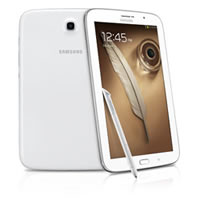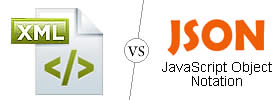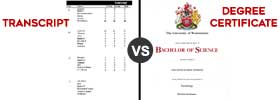Difference between Samsung Galaxy Note 8.0 and Nexus 7
Key difference: The Samsung Galaxy Note 8.0 aims at filling the gap between the Galaxy Note II and the Galaxy Note 10.1. The Galaxy Note 8 features an 8 inch TFT capacitive touchscreen with a resolution of 800 x 1280 pixels. The device is powered by a Quad-core 1.6 GHz Cortex-A9 and 2 GB of RAM. The device runs on Android OS, v4.1.2 (Jelly Bean). The Nexus 7 is a tablet computer running Android 4.1 (also named Jelly Bean) operating system. It was developed in collaboration with Asus. It was the first tablet in the Google Nexus series and features a 7-inch (180 mm) display, an Nvidia Tegra 3 quad-core chip, 1 GB of RAM, and 8, 16 or 32 GB of internal storage.
 Samsung is a major player on the world smartphone platform. It is the second most popular smartphone retailer in the world by number of units sold, after Apple. It is in fact the first most popular Android smartphone retailer in the world by number of units sold. The company’s Samsung Galaxy S3 was the first phone that gave the iPhone a real competition. Hence, effectively making the Galaxy brand, a brand to be reckoned with.
Samsung is a major player on the world smartphone platform. It is the second most popular smartphone retailer in the world by number of units sold, after Apple. It is in fact the first most popular Android smartphone retailer in the world by number of units sold. The company’s Samsung Galaxy S3 was the first phone that gave the iPhone a real competition. Hence, effectively making the Galaxy brand, a brand to be reckoned with.
Another line of products that Samsung has made popular is the ‘phablet’ by introducing the Samsung Galaxy Note. A phablet is a cross between a phone and a tablet; it sized as a table but with all the properties of a phone. Samsung’s latest product in this category is the Samsung Galaxy Note 8.0. While, officially the Note 8 is considered a tablet, it does come with the optional SIM slot, thus allowing it calling and 3G capabilities.
The Samsung Galaxy Note 8.0 aims at filling the gap between the Galaxy Note II and the Galaxy Note 10.1. The Galaxy Note II featured a 5.55 inch screen, while the Galaxy Note 10.1, as the name suggests a 10.1 inch screen. There just wasn’t an option in between unless one considered the Galaxy Tab series, which of course did not come with the S-pen stylus.
The Galaxy Note 8 features an 8 inch TFT capacitive touchscreen with a resolution of 800 x 1280 pixels. The device is powered by a Quad-core 1.6 GHz Cortex-A9 and 2 GB of RAM. The device runs on Android OS, v4.1.2 (Jelly Bean). It is available with or without the support for a SIM and in 16 GB or 32 GB variants. In addition of the 16GB or 32 GB internal storage, the device hosts an external storage capacity of up to 64 GB. The device features a 5 MP primary camera with a 1.3 MP secondary primary camera.
In addition to the above mentioned features, the phone also boasts several features that are available on the Samsung Galaxy S4. This includes ‘Samsung WatchON’ that transforms the phone into an IR remote controller to connect to the home entertainment system; as well as ChatON, which allows the user to share the phone’s screen with other users. In addition the device also has a split screen capability that allows two or more applications to share the screen. These applications include email, messages, ‘MyFiles,’ ‘S Memo,’ ‘S Planner’, and more. The phone also has the popular ‘Air View’ feature, which allows users to preview information in emails, photos in Gallery, and speed dial contacts, before opening them.
 Among the number of various companies, Google has also launched its own line of smartphones based on Android, called the Google Nexus. Each device in the Nexus line is produced via collaboration between Google and a leading original equipment manufacturer (OEM) partner. The Nexus devices in general have an advantage over other devices in that the Android in the Nexus devices is pure. I.e. the Android does not have any manufacturer or wireless carrier modifications to it, such as a custom graphical user interface. The Android also has an unlockable bootloader to allow further development and end-user modification, all of which is usually blocked on other Android smartphones.
Among the number of various companies, Google has also launched its own line of smartphones based on Android, called the Google Nexus. Each device in the Nexus line is produced via collaboration between Google and a leading original equipment manufacturer (OEM) partner. The Nexus devices in general have an advantage over other devices in that the Android in the Nexus devices is pure. I.e. the Android does not have any manufacturer or wireless carrier modifications to it, such as a custom graphical user interface. The Android also has an unlockable bootloader to allow further development and end-user modification, all of which is usually blocked on other Android smartphones.
The Nexus 7 is a 7-inch tablet computer running Android 4.1 (named Jelly Bean) operating system. It was developed in collaboration with Asus. It was the first tablet in the Google Nexus series and features a 7-inch (180 mm) display, an Nvidia Tegra 3 quad-core chip, 1 GB of RAM, and 8, 16 or 32 GB of internal storage. The 8 and 16 GB models were Wi-Fi only, and the 8 GB was eventually discontinued. The 32 GB models are both Wi-Fi and 3G compatible.
The Nexus 7 was marketed effectively as an entertainment device. The tablet has been designed with gaming purpose in mind and has received high resolution display and various sensors to make it the ultimate gaming tablet. The tablets has dropped the rear primary cameras in the tablet and instead focus on place a 1-2 MP front-facing camera for video chatting purposes. The company has also eliminated the Camera app, so users will have to download an app from third-party developers from Google Play. According to Techradar, the images from the camera were a little grainy, but video calling was seamless, with no lag during calls. The low price of the Nexus 7 makes it a good and cheap companion. The 32 GB is available for USD 199 from the website.
The information for the detailed table about the two phones has been taken from the Samsung website, the Google Nexus website and GSMarena.com.
|
|
Samsung Galaxy Note 8.0 |
Nexus 7 |
|
Launch Date |
Q2 2013 |
June 27, 2012 |
|
Company |
Samsung |
Google; designed in collaboration with and manufactured by Asus. |
|
Size |
210.8 x 135.9 x 8 mm (8.30 x 5.35 x 0.31 in) |
198.5 x 120 x 10.5 mm (7.81 x 4.72 x 0.41 in) |
|
Display |
TFT capacitive touchscreen, 16M colors |
LED-backlit IPS LCD capacitive touchscreen, 16M colors |
|
Screen |
800 x 1280 pixels, 8.0 inches (~189 ppi pixel density) |
800 x 1280 pixels, 7.0 inches (~216 ppi pixel density) |
|
Protection |
- |
Corning Glass |
|
Weight |
338 g (11.92 oz) |
340g (11.99 oz) |
|
2G Network |
GSM 850 / 900 / 1800 / 1900 |
GSM : 850/900/1800/1900 |
|
3G Network |
HSDPA 850 / 900 / 1900 / 2100 |
WCDMA : 850/900/2100 |
|
4G Network |
LTE (market dependent) |
No |
|
GUI |
TouchWiz UI |
Pure Android |
|
CPU speed |
Quad-core 1.6 GHz Cortex-A9 |
Quad-core 1.2 GHz Cortex-A9 |
|
GPU |
Mali-400MP |
ULP GeForce |
|
OS |
Android OS, v4.1.2 (Jelly Bean) |
Android OS, v4.1 (Jelly Bean), upgradable to v4.2.1 (Jelly Bean) |
|
Chipset |
Exynos 4412 |
Nvidia Tegra 3 |
|
RAM |
2 GB RAM |
1 GB RAM |
|
SIM Size |
Micro-SIM (optional) |
Micro-SIM for 3G model |
|
Internal Memory |
16/32 GB storage |
16/32 GB storage |
|
Expandable Memory |
microSD, up to 64 GB |
None |
|
Sensors |
Accelerometer, gyro, proximity, compass |
G-Sensor, Light Sensor, Gyroscope, E-compass, GPS, NFC, Hall Sensor |
|
Connectivity |
WiFi 802.11 a/b/g/n (2.4 & 5GHz), WiFi Direct, AllShareCast, BT4.0, USB 2.0 |
Wi-Fi 802.11 b/g/n Bluetooth NFC (Android Beam) 32GB + Mobile data version only: Unlocked GSM/UMTS/HSPA+ 32GB + Mobile data version only: GSM/EDGE/GPRS (850, 900, 1800, 1900 MHz) 32GB + Mobile data version only: 3G (850, 900, 1700, 1900, 2100 MHz) 32GB + Mobile data version only: HSPA+ 21 Mbps |
|
Data |
HSDPA, HSUPA, EDGE, GPRS, WAP, GPS, AGPS |
WiFi, NFC, USB GPRS, EDGE for 32GB + Mobile data version only |
|
Speed |
HSDPA, 21 Mbps; HSUPA, 5.76 Mbps |
HSPA+ 21 Mbps |
|
WLAN |
Wi-Fi 802.11 a/b/g/n, dual-band, Wi-Fi Direct, Wi-Fi hotspot, DLNA |
Wi-Fi 802.11 b/g/n |
|
Bluetooth |
Yes, v4.0 with A2DP |
Bluetooth V3.0 |
|
USB |
Yes, microUSB v2.0 (MHL), USB Host |
Micro-USB |
|
Primary Camera |
5 MP, 2592х1944 pixels, autofocus |
1.2 MP |
|
Secondary Camera |
1.3 MP |
None |
|
Video |
Yes, 720p@30fps |
720p |
|
Camera Features |
Auto Focus; Shot Modes, Buddy Photo Share, Cartoon, Panorama, Share Shot, Single Shot, Smile Shot; Geo-tagging; Camcorder; DivX®; HD Recording; HD Playback; Video Share; TV-Out; Online Image Uploading |
Video-calling |
|
Sound Enhancement |
- |
No |
|
Audio supported formats |
MP3, AAC, AAC+, eAAC+, WMA, AC3, FLAC |
MP3/WAV/eAAC+/WMA player |
|
Video supported formats |
MPEG4, H.263, H.264, WMV, DivX |
MP4/H.264 player |
|
Battery Capacity |
Non-removable Li-Ion 4600 mAh battery |
Non-removable Li-Ion 4325 mAh battery |
|
Available Colors |
Marble White |
Black |
|
Messaging |
SMS (threaded view), MMS, Email, Push Email, IM |
Email, Push Email, IM, RSS |
|
Browser |
HTML5 - Android + Samsung / Android Browser / Chrome Browser (GMS) |
HTML5 |
|
Radio |
No |
No |
|
GPS |
Yes, with A-GPS support and GLONASS |
Yes |
|
Java |
Yes, via Java MIDP emulator |
None |
|
Additional Features |
|
|
Image Courtesy: samsung.com, androidheadlines.com









Add new comment